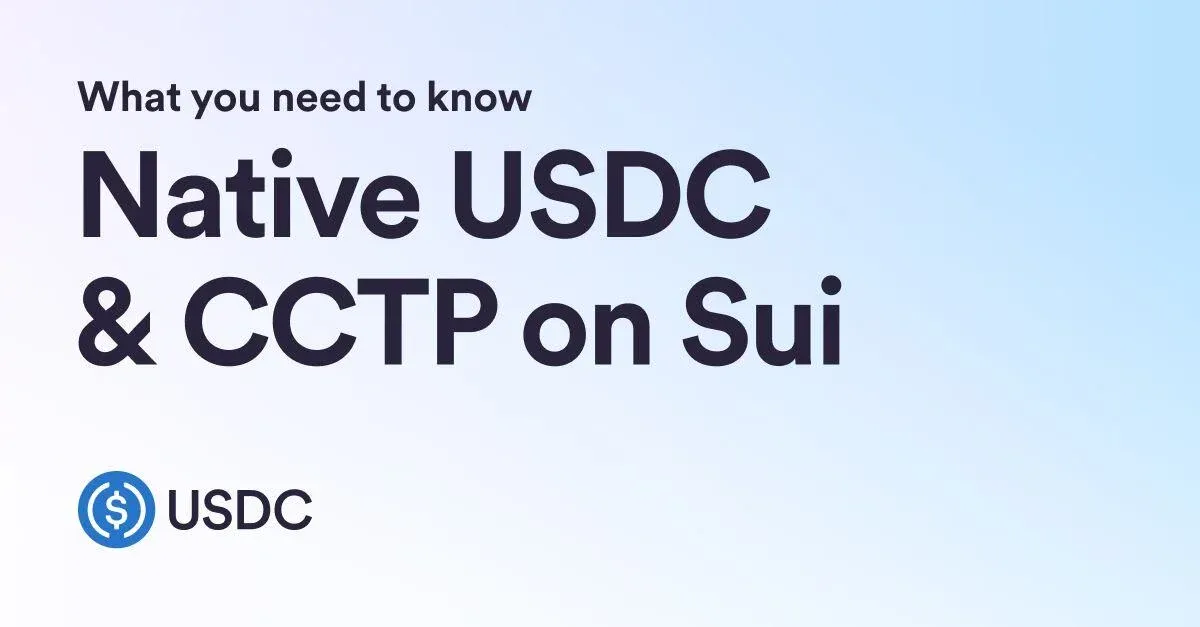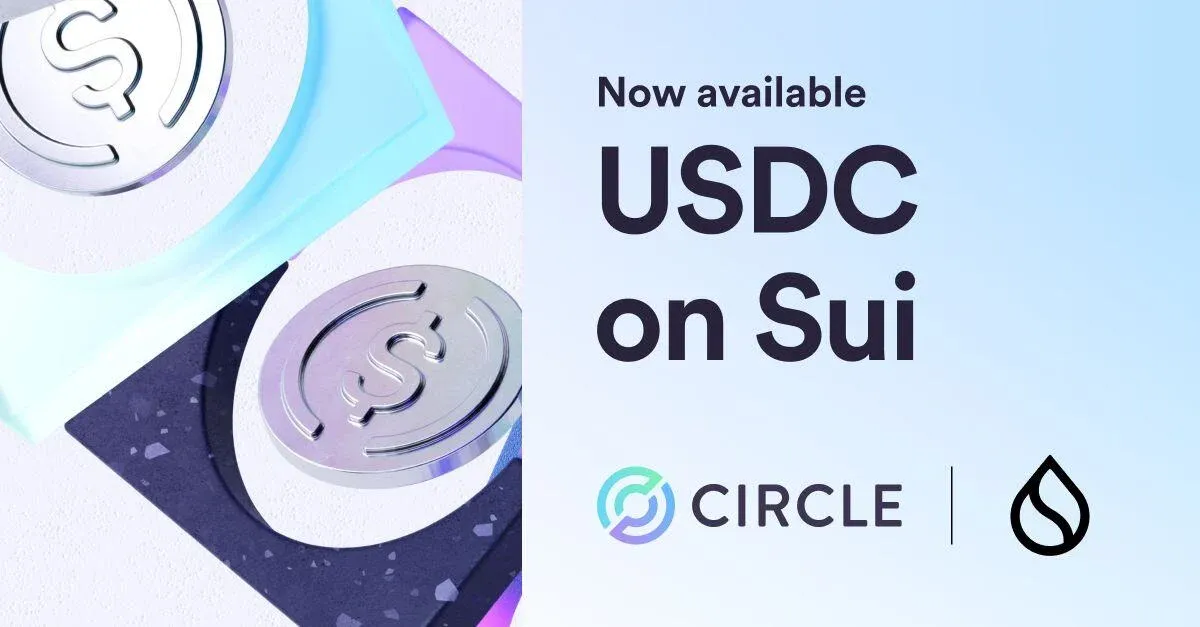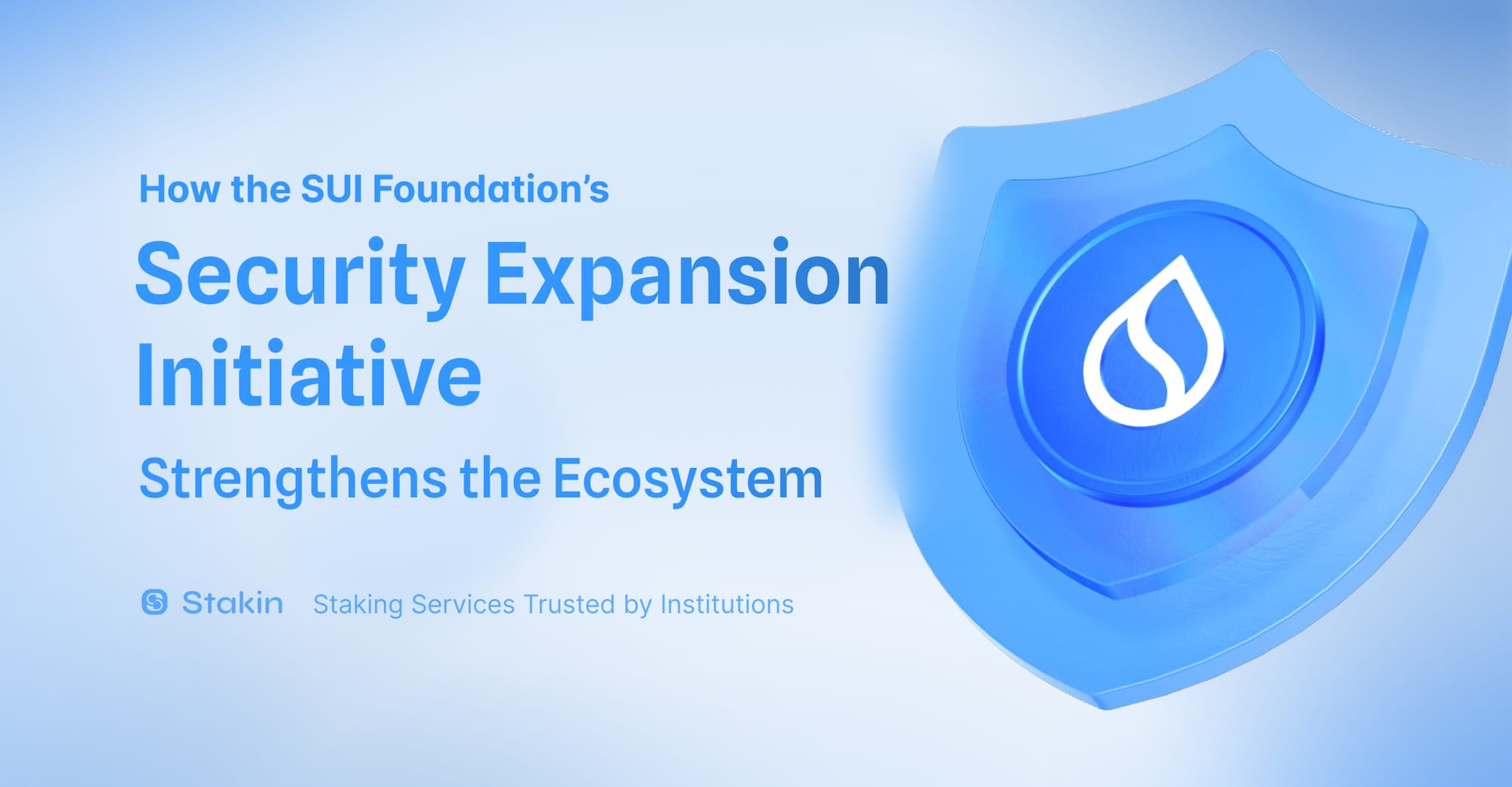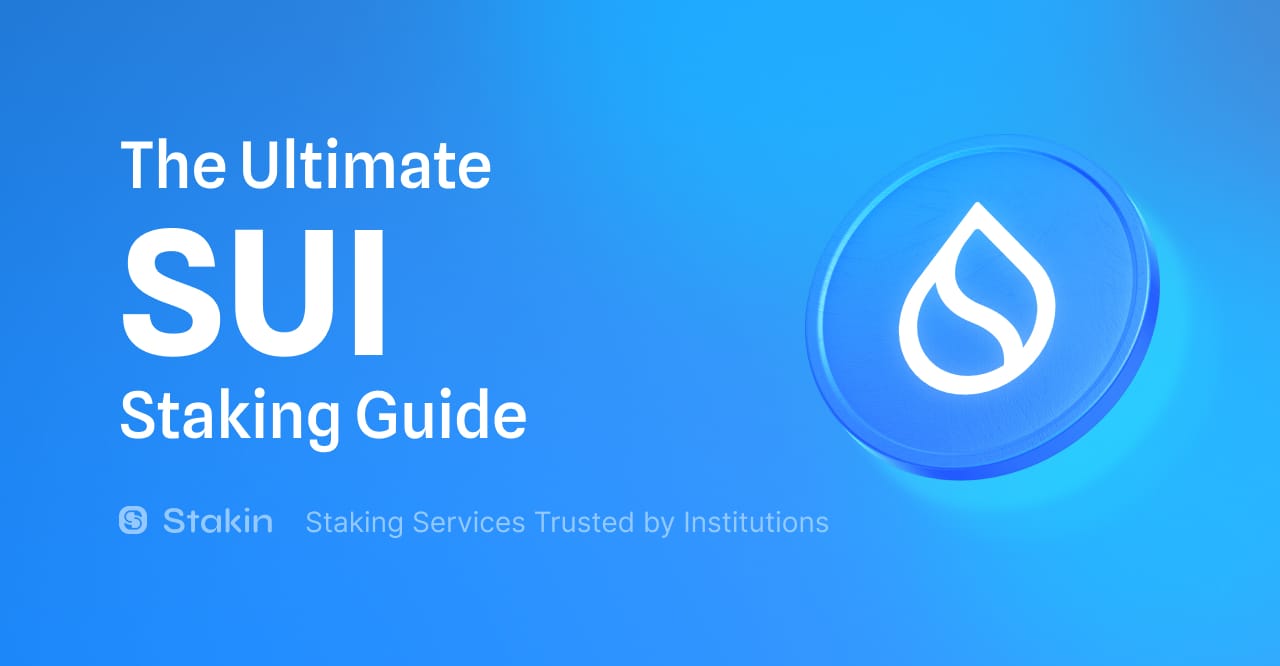Key Takeaways
- Sui recently announced a partnership with US blockchain payment rail infrastructure provider and stablecoin platform Circle to dramatically increase USDC liquidity and interconnectivity within the Sui ecosystem.
- The agreement also greatly increases interoperability with other chains connected to Sui and Circle’s Cross Chain Transfer Protocol (CCTP), allowing the network to more easily share digital assets and various data sets between a larger number of network types and chains.
- The end goal of the partnership is to help create a unified system of blockchains and networks of all types and sizes, while markedly increasing the adoption and growth of Sui’s underlying platform and the protocols and dApps built atop it moving forward.
Stablecoin Liquidity, Cross-Chain Interoperability, and Adoption
For those new to Web3, total stablecoin liquidity within a blockchain ecosystem is an important indicator that highlights how much a network and its underlying dApps, protocols, and the like are being used overall.
As is clearly evident, stablecoins are required for many important processes that ensure the continued growth, evolution, and integrity of blockchains and their larger ecosystems. This includes everything from currency trading quote currencies, cross border remittances and value exchange, short- to medium-term value storage, and as a stable payment form equivalent to fiat that is not susceptible to volatility like traditional crypto assets.
On the other hand, cross-chain connectivity and interoperability are critically important to allow for value flow between numerous blockchain and independent network types, both inside crypto, and in traditional finance (TradFi) and other industries at large.
Metaphorically, if we consider a subway system in a large metropolitan area like New York City or London, the lack of cross-chain interoperability within a blockchain network would be akin to a subway cut out from its inner-city lines, meaning the entire system would be unable to operate as intended.

Sui’s Newfound Liquidy Paradigm Through USDC and CCTP
As many of you know, Sui Network is one of the most advanced Layer 1 blockchain platforms in existence. Although considered avant-garde in many respects, like all other chains fighting for market share, Sui must exponentially increase its adoption to have a fighting chance of competing with industry heavyweights such as Solana, Ethereum, and others. Often, more stablecoin liquidity means more total value locked (TVL) and a growing network effect.
Like Aptos and other competitors, Sui makes use of the Move programming language as one of the main foundation paradigms behind its secure and advanced developer environment. To continue to increase the adoption of Move and Sui at large, it’s absolutely critical that the number of stablecoins operating on the network continues to increase, and that those stablecoins can move freely between different chains, ecosystems, and the like in the increasingly evolving blockchain arena.
To realize this goal, Sui recently partnered with the global FinTech firm Circle to allow the USDC stablecoin to operate on its platform through the help of Circle’s Cross-Chain Transfer Protocol (CCTP), thus making Sui the first Move-specific blockchain to harness CCTP in the industry.
For those unfamiliar, USDC is the second largest stablecoin by total market cap behind only Tether’s USDT. On the other hand, CCTP is one of the most powerful interoperability platforms in existence (competing with Chainlink’s CCIP and others), connecting both blockchain systems and TradFi as one.
How does CCTP Work?
CCTP is a permissionless on-chain interoperability and liquidy sharing paradigm that allows for the transfer of USDC between blockchains using a native burning and minting mechanism.
The platform also allows developers to build multi-chain dApps that help facilitate 1:1 USDC asset transfers between chains for numerous chain-specific user types.
To increase its utility, CCTP can be embedded within practically any application, wallet, or bridge to help streamline user experience (UX) for a host of multi-chain and cross-chain utilities. Because of the fact that USDC operates natively on a large number of blockchains, it is able to unify liquidity and data across numerous environments where it’s supported, increasing Sui’s reach in the process.
Essentially, CCTP makes use of a chronological three-step process to send and receive USDC between blockchains:
- USDC is burned atop the source chain: By making use of a mobile or desktop application (a wallet or similar) a user initiates a transfer from chain to chain while specifying the recipient address on the receiving chain. The amount of USDC sent from the source chain is then burned within the user’s app.
- A signed attestation is retrieved from Circle: Next, Circle notes and attests the proposed burn event coming from the source chain, whereby the app requests the attestation from Circle (i.e. confirming the transaction is in fact legitimate), who then authorizes the minting of the specific USDC transfer amount on the destination chain.
- USD is minted on the receiving chain: The last step sees the application leverage Circle’s attestation to trigger the minting of the sent amount of USDC which is minted on the destination chain in the receiving recipient’s wallet address.

What the USDC and CCTP Partnership Means for Sui Network
CCTP can be used by Sui developers to create multi-chain applications that can be pieced together to form numerous functionalities related to trading, payments, lending and borrowing, gaming, NFTs, gaming, and others, while simultaneously ensuring a simple user experience for all involved.
Not only does CCTP connect Sui and other blockchains to realize numerous blockchain-specific utilities, it acts as an interoperability hub that connects the traditional mainstream financial sector to Web3. Overall, the newly launched Circle partnership means a lot for Sui developers, institutions, enterprises, and retail users alike. Some of these benefits include:
- Access to a fully regulated, reserved, and 24/7/365 redeemable US dollar stablecoin
- Provides the required infrastructure for institutional on/off-ramps like Circle Mint
- Ensures simplified integration into existing Sui dApps and protocols
- Allows for the streamlined creation of interoperable multi-chain dApps to facilitate transactions across MoveVM-, EVM-, SVM-, and Cosmos SDK-supported chains
- Enables the secure movement of USDC seamlessly between numerous blockchains across a large number of routes with 1:1 capital efficiency
- Facilities streamlined cross-chain onboarding, purchases, swaps, treasury rebalancing, and more, while employing a simple, easy-to-use, and efficient UX
- Increased Sui developer and user interoperability between Solana, Arbitrum, Base, Ethereum, and other blockchains
- Bridging between numerous chains via the Wormhole Portal Bridge and others
To provide more context into Circle and USDC growth, as of October 22nd, 2024, the total market cap of USDC globally sits at more than 34 billion, while Circle itself has helped businesses of all types and sizes move approximately 1.4 trillion in transactions throughout the past year.
In addition to CCTP and USDC, Circle’s main products include EURC (Circle’s newly launched Euro stablecoin), Circle Mint (an institutional on/off-ramp service for large enterprises and financial institutions), programmable wallets, and the Circle Smart Contract Platform.
By facilitating the integration of USDC within the Sui network, the platform is able to seamlessly access the above products and services (and others) in interoperable confluence with many traditional financial institutions and numerous open public blockchains, while concurrently streamlining transactions and improving liquidity and market efficiency across the greater Sui ecosystem.

Unlocking New Experiences with USDC on Sui
Although considered leading-edge in many respects, like all open public blockchains fighting for market share, Sui must continue to increase its adoption to have a fighting chance of competing with industry heavyweights such as Ethereum, Solana, and others.
Realizing this goal would be extremely challenging without the connectivity, liquidity, and interoperability of USDC and CCTP. To help bring about this vision, numerous user types and sectors are supported atop Sui. These include:
- DeFi: As one of any blockchain ecosystem’s main pillars, decentralized finance (DeFi) allows for the continued adoption of blockchain and crypto. Sui is no different with a burgeoning ecosystem of DeFi iterations that include decentralized exchanges (DEXs), various staking protocol types, lending and borrowing platforms (money markets), derivatives solutions, and more.
- Gaming: Like many Layer 1 blockchains, Sui is heavily focused on play-to-earn (P2E) gaming to help increase user growth on the network. To boost this trajectory, it was announced on September 2nd that Sui would be opening pre-orders for its newly developed handheld SuiPlay0X1 gaming device (check out our article on the Sui Play 0X1).
- DePIN: Decentralized Physical Infrastructure Networks (DePINs) are a recently developed network infrastructure type designed to bridge the gap between blockchain systems and various real-world hardware and physical infrastructure models and platforms. These include those related to telecommunications, the Internet of Things (IoT), computing bandwidth, data storage, energy marketplaces, and more.
- E-commerce: In our increasingly technological world, e-commerce continues to become ever more prevalent, meaning blockchain systems will continue to increasingly support the infrastructure underpinning the Internet of commerce. Today, with the help of Circle's programmable platform and APIs, Sui is contributing to the rise of a new generation of financial services and e-commerce applications.
Overall, the integration of USDC will empower Sui apps to extend their growth and reach, unlocking new opportunities in DeFi and across numerous additional verticals moving forward.
Looking Ahead
The integration of USDC atop Sui via Circle’s Circle's Cross-Chain Transfer Protocol (CCTP) represents a significant milestone for the Sui blockchain and its underpinning ecosystem. This foundational partnership will ensure continuously increasing liquidity within the Sui ecosystem, while simultaneously improving cross-chain interoperability between Sui and numerous additional blockchain platforms and TradFi giants moving forward.
USDC-Sui connectivity will allow for the seamless exchange of digital assets and additional data sets between a host of network types while providing Sui developers with the necessary infrastructure to create multi-chain dApps that are easy to use, secure, adaptable, and highly scalable.
This will help boost Sui’s standing as it competes against the likes of industry giants such as Ethereum, Solana, and others. With increasing TVL and stablecoin liquidity (which will now be significantly boosted with the introduction of USDC) atop the network, it seems plausible that the adoption of Sui's DeFi, gaming, e-commerce, and DePIN sectors, and others will continue to increase.
Fundamentally, Sui’s newfound collaboration with Circle will help solidify its position as a leading Layer 1 blockchain in the burgeoning crypto and blockchain sector, ultimately resulting in increased innovation and adoption for both parties in the Web3 space.
DISCLAIMER: This is not financial advice. Staking, delegation, and cryptocurrencies involve a high degree of risk, and there is always the possibility of loss, including the failure of all staked digital assets. Additionally, delegators are at risk of slashing in case of security or liveness faults on some protocols. We advise you to do your due diligence before choosing a validator.



